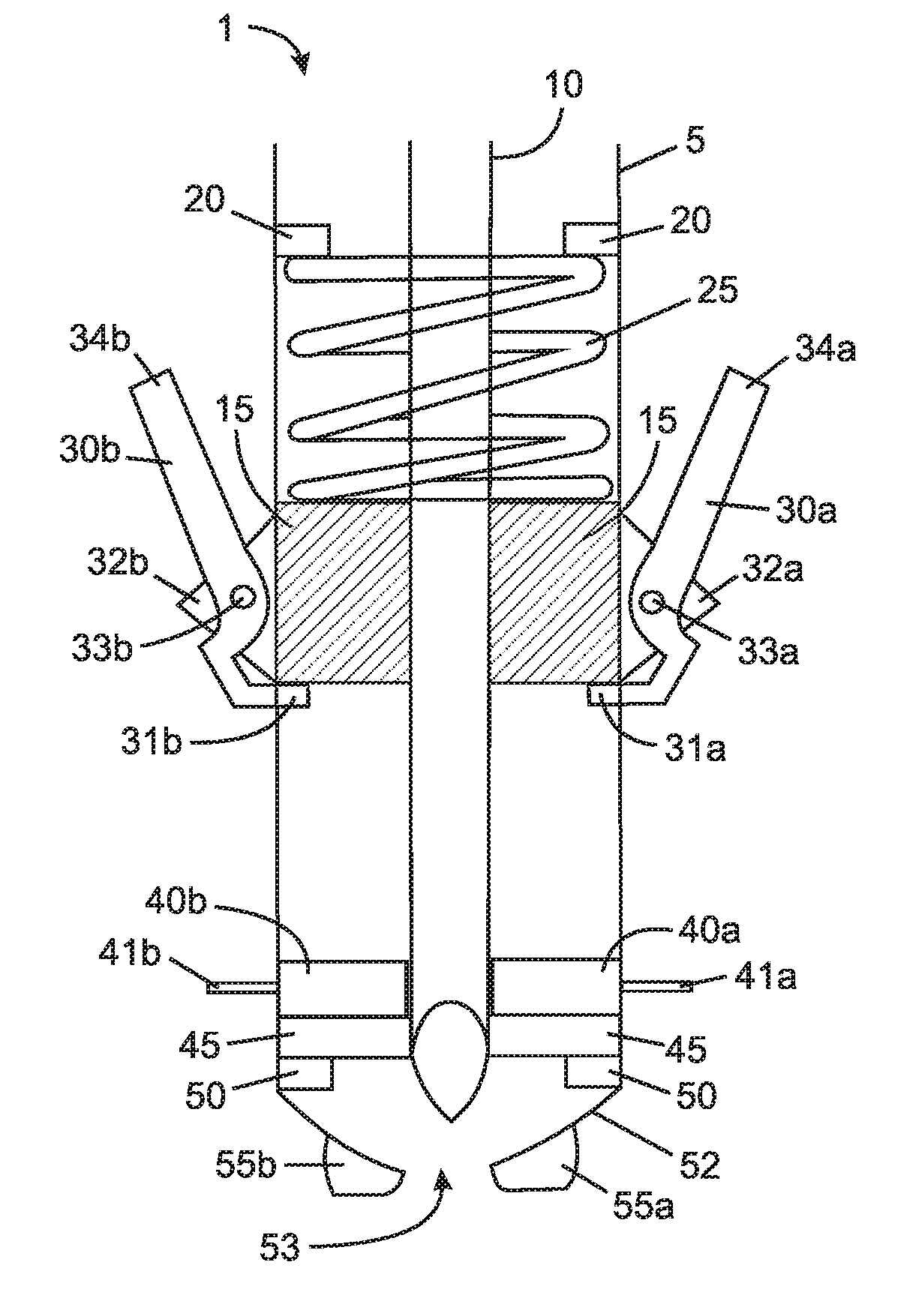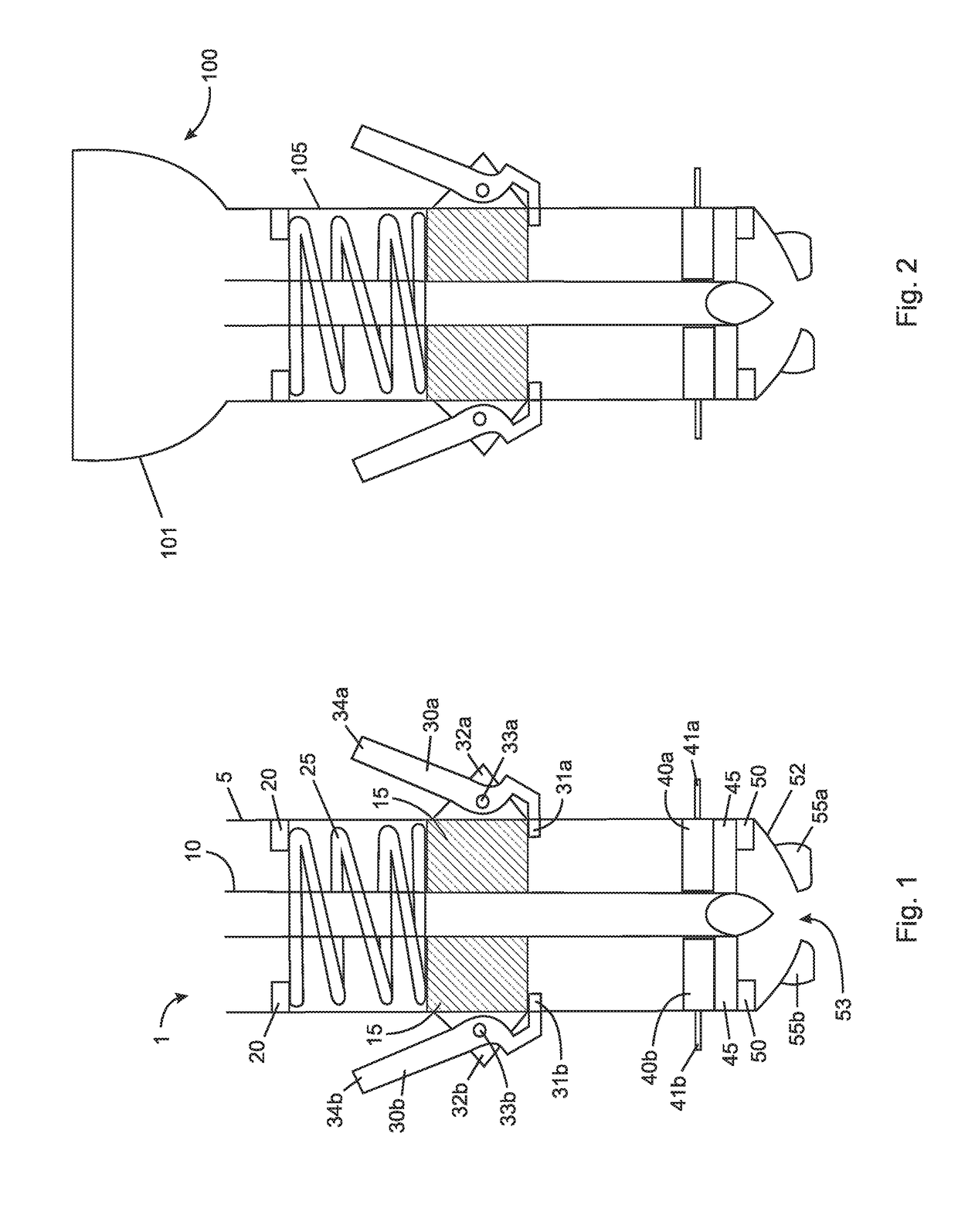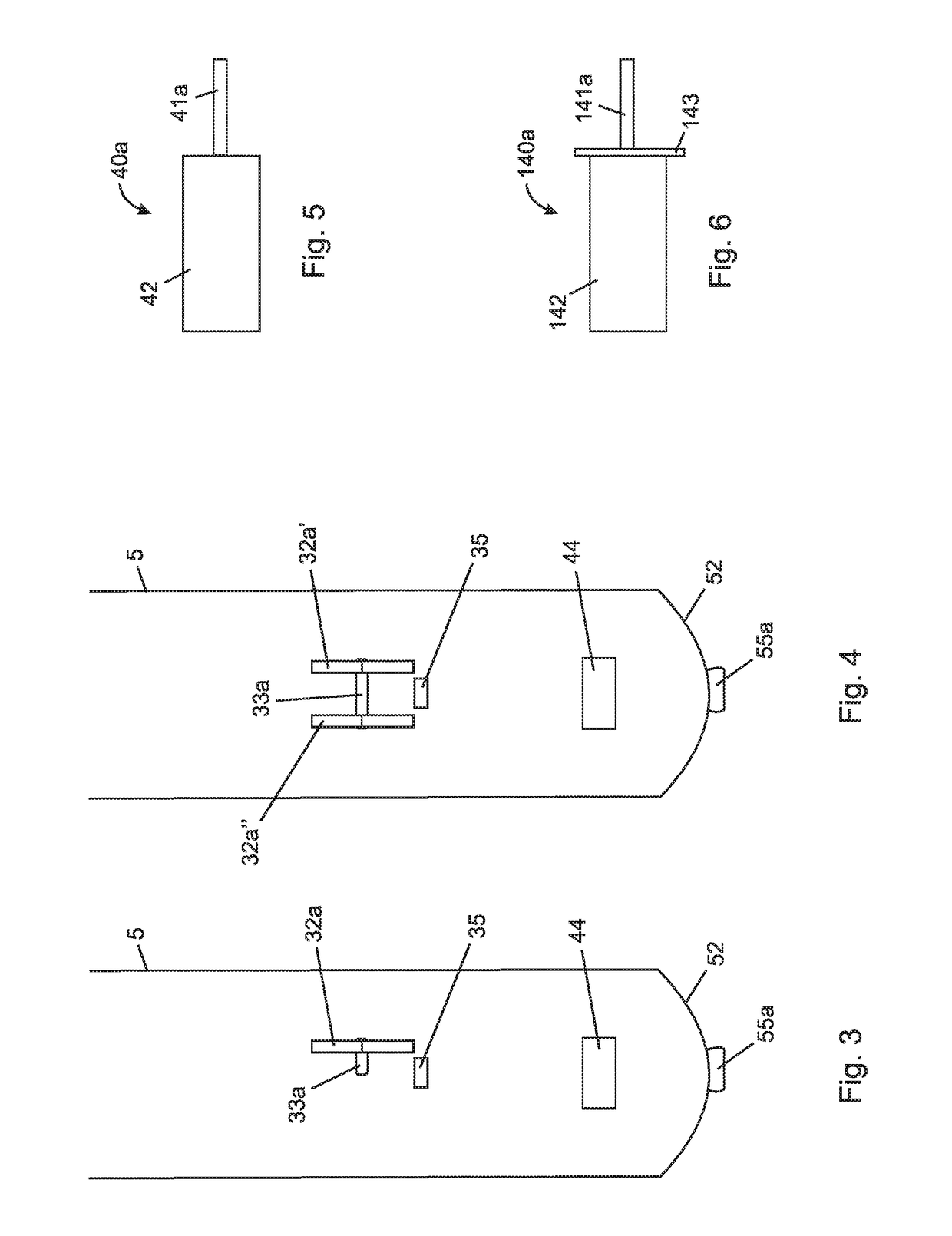Emergency tracheotomy device
a tracheotomy and emergency technology, applied in the field of medical devices, can solve problems such as death from asphyxiation, and achieve the effects of convenient observation of convenient observing the condition of the elements, and convenient construction and assembly
- Summary
- Abstract
- Description
- Claims
- Application Information
AI Technical Summary
Benefits of technology
Problems solved by technology
Method used
Image
Examples
Embodiment Construction
[0051]Referring to FIG. 1, a tracheotomy device 1 includes a housing comprising a hollow open-ended tube 5 containing a trocar 10 supported in a trocar seal and support 15. The tube 5 may have any suitable cross-sectional shape, for example circular, rectangular, square, hexagonal and the like. The trocar seal and support 15 comprises an annular sealing member having a through aperture through which the trocar 10 extends, the sealing member forming a seal with an outer surface of the trocar 10 so that the trocar 10 cannot move translationally in the trocar seal and support 15. The trocar seal and support 15 is slidably engaged within the tube 5. Thus, the trocar 10 moves with the trocar seal and support 15 when the device 1 is activated. The seal may be a friction seal or an adhesive seal.
[0052]The tube 5 comprises spring retainer 20 inside and proximate a proximal end of the tube 5. The spring retainer 20 may be an annular protrusion fully or partially around an inner circumference...
PUM
 Login to View More
Login to View More Abstract
Description
Claims
Application Information
 Login to View More
Login to View More - R&D
- Intellectual Property
- Life Sciences
- Materials
- Tech Scout
- Unparalleled Data Quality
- Higher Quality Content
- 60% Fewer Hallucinations
Browse by: Latest US Patents, China's latest patents, Technical Efficacy Thesaurus, Application Domain, Technology Topic, Popular Technical Reports.
© 2025 PatSnap. All rights reserved.Legal|Privacy policy|Modern Slavery Act Transparency Statement|Sitemap|About US| Contact US: help@patsnap.com



